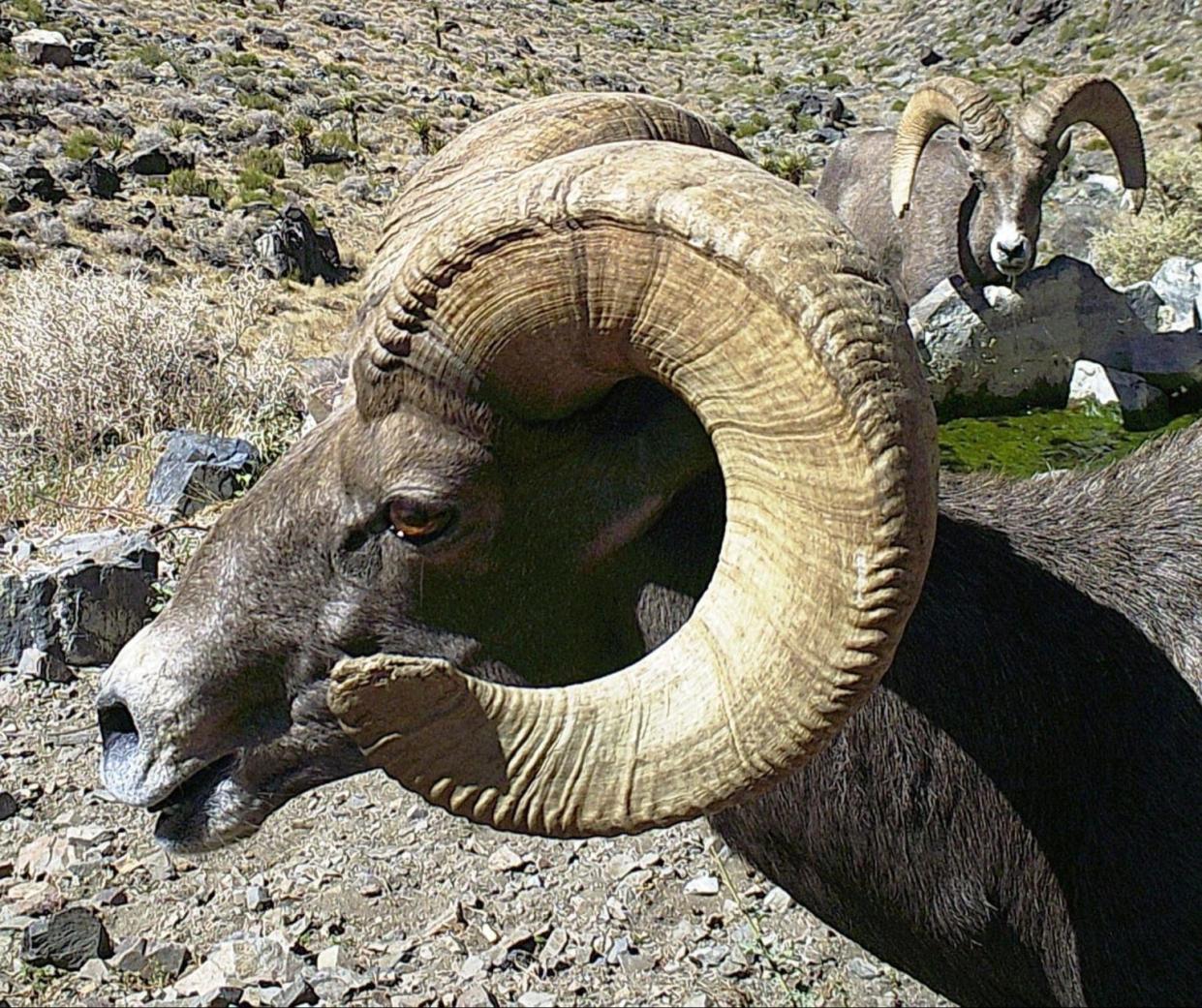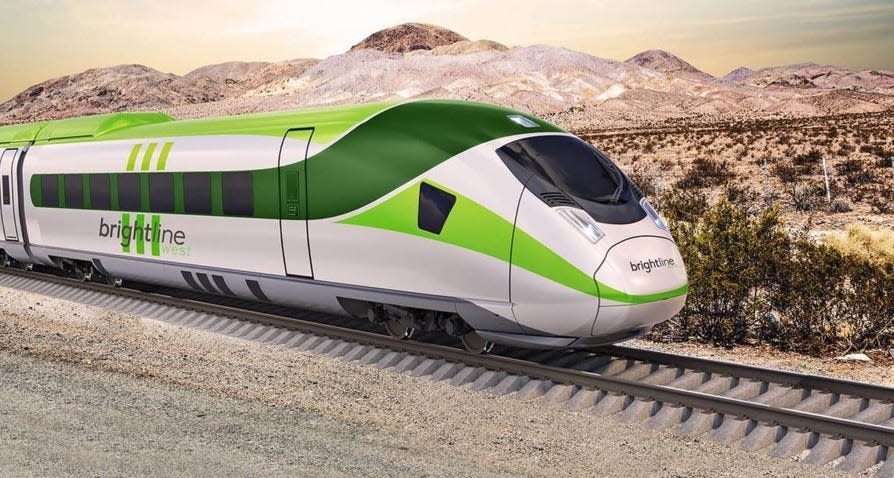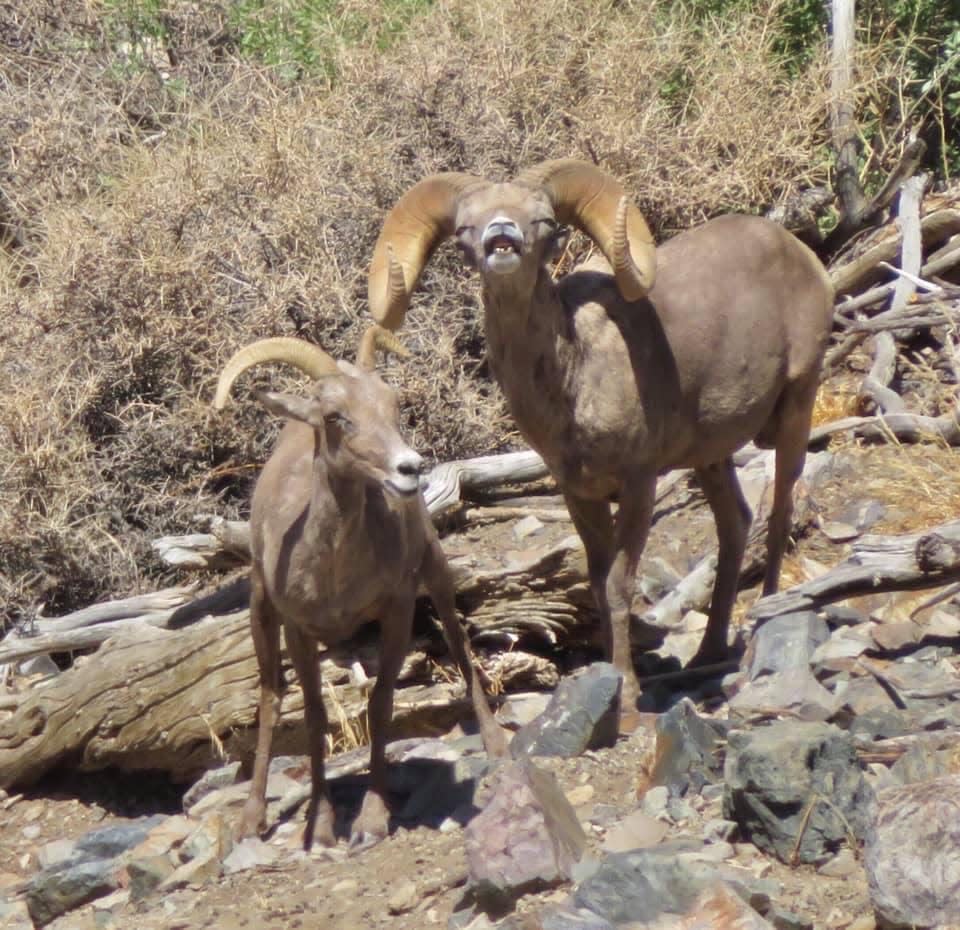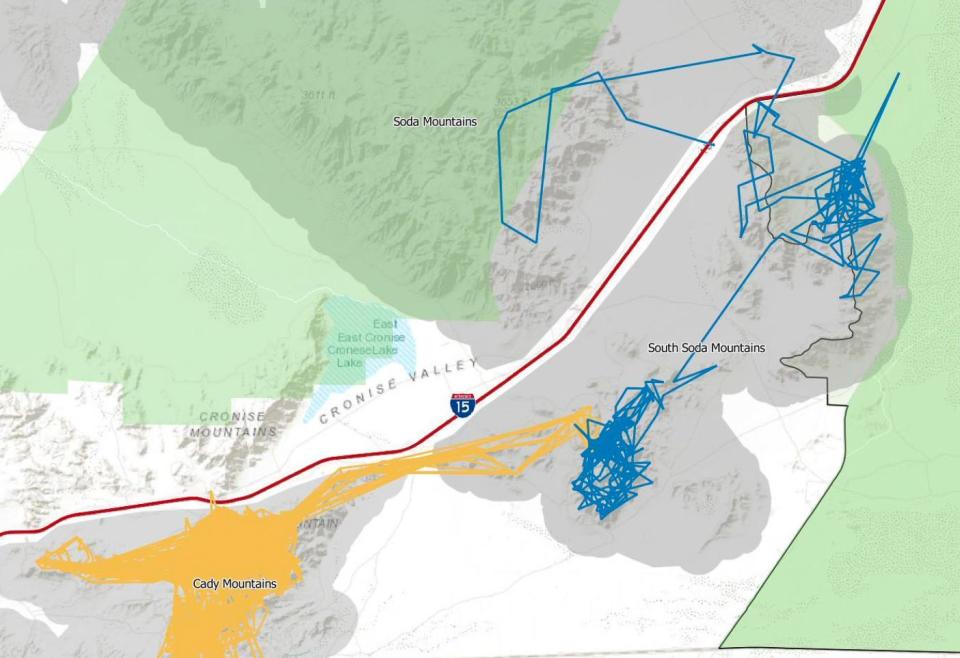Senators express concern Brightline train could harm bighorn sheep by fragmenting habitat

- Oops!Something went wrong.Please try again later.
- Oops!Something went wrong.Please try again later.
When developers of a proposed high-speed train from Los Angeles to Las Vegas talk about their project, one point they emphasize is the benefit to the environment.
Representatives of Brightline West have said the electric trains running at speeds of up to 200 mph will cut emissions — 400,000 tons of carbon dioxide annually — by removing from the road more than 3 million vehicles that would normally travel up Interstate 15 to Sin City every year.
“When launched, Brightline West will be one of the greenest forms of transportation in America and an eco-friendly upgrade to the I-15,” said Ben Porritt, the company’s senior vice president.
But several groups and officials, including two U.S. senators, worry about the impact the train could have on residents that don’t drive — particularly desert bighorn sheep.
For local stories that matter, subscribe today.
They say the train will create a barrier and prevent the state-protected animal from roaming through its normal habitat, which could potentially threaten its long-term survival.
The solution? Build at least three wildlife over-crossings to allow the sheep and other species to move freely over the tracks and freeway.
Whether the bridges will actually be built remains to be seen.
Feinstein, Padilla want more from project
Planned to be built mostly in the median of the I-15, the rail project — conceived of in 2005 — has seen several investors come and go and encountered many hurdles.
Last year, Brightline secured the rights to issue $800 million in private bonds to fund the train. The developer let the rights lapse, though, “citing financial market uncertainty caused by the pandemic,” the Daily Press reported.
The company was able to sign off on a lease agreement with Caltrans in July 2020 to use the existing right of way along the I-15 for the $8 billion project.

And earlier this year, Brightline announced that Rancho Cucamonga, along with Apple Valley, would serve as station locations. Developers estimate the average drive time from that Inland Empire city to the Nevada destination will be cut by nearly half with a two-hour trip.
There’s more at stake than a shorter commute, however, say California's senators, Dianne Feinstein and Alex Padilla.
In a Nov. 1 letter to Gov. Gavin Newsom, they echoed the findings of scientists and said the train’s current design — which calls for it to be “flanked by six-foot concrete walls topped by chain-link fences” — would impede protected species like bighorn sheep, desert tortoises and mountain lions from crossing the highway.
Both Caltrans and the California Department of Fish and Wildlife “documented these threats in their June 2021 recommendations to Brightline,” urging the construction of the wildlife overpasses, according to the senators.
“Despite these recommendations and repeated stakeholder engagement, Brightline has not committed to build wildlife crossings even though it will seek tax-exempt private activity bonds for this $8 billion project, with expected revenue of nearly $1 billion,” Feinstein and Padilla wrote.
In a statement Friday, Porritt said Brightline officials would be “working collaboratively with both public and private stakeholders to ensure that as we build and operate the train, we do so in a way that considers any highway improvements, conservation efforts, and other future opportunities that may arise.”
“As an example, we will maintain or improve the 600+ existing small culverts and large-scale crossings under the I-15 freeway that exist today and work with Caltrans and other stakeholders for any crossings that may be built over the I-15 in the future,” he added.
'They really count on being able to move'
But simply keeping up what’s already there won’t be enough, some believe.
Desert bighorn sheep are seldom seen in the wild, mainly owing to the fact that they live in remote mountain areas inhospitable to man.
With severe long-term drought and climate change bringing rising temperatures, everyday living has become even more tenuous for the mammals who have been protected under state law since 1971.

Their survival depends on the ability to roam and forage for food and water and also interact and mate with other herds, according to Jeff Villepique, a senior wildlife biologist with the California Department of Fish and Wildlife, who heads the department’s local bighorn sheep program.
“They really count on being able to move,” he said. “The ability to leave your mountain range and go to a new one is key.”
About 4,500 bighorns live across the state's Mojave and Sonoran deserts and transverse ranges, Villepique said.

A study by the California Department of Fish and Wildlife and Oregon State University reported GPS-tracked bighorn sheep have crossed the I-15 in areas such as the Soda and Cady mountains that line the freeway on the way to Vegas.
The scientists also found the animals were unwilling to use culverts. Villepique said this was likely due to the sheep’s wariness of entering darkened areas because they can’t spot predators.
The study recommended three wildlife over-crossings be built and four main underpasses be improved. At the minimum, scientists said one overpass should be built at Zzyzx Road, southwest of Baker, with the underpasses maintained.
A federal review says additional crossings not necessary
How the bridges would be built, however, is unclear.
A Caltrans spokesperson told the Los Angeles Times in September that the agency did not have the “authority to require that Brightline West incorporate wildlife crossings as part of the project.” The train line, given that it crosses state borders, is being overseen by the Federal Railroad Administration.
Villepique said whether Caltrans can force construction is a point of contention between the agency and non-governmental organizations that support the bridges.
Adding to the mix, a federal environmental review for the high-speed train appears to dispute any additional improvements are needed.
The Federal Railroad Administration found last year in a reevaluation of the 2011 final environmental impact statement that “habitat fragmentation or isolation” as to wildlife movement was not anticipated as a result of the project.
“Existing culverts and wildlife crossing locations under the I-15 freeway corridor would remain in place,” according to the report.
Villepique said the California Department of Fish and Wildlife did not agree with the railway administration's “interpretation.”
“We think there is a dramatic impact of fragmentation on particularly bighorn sheep and other species as well,” he said. “It puts the long-term survival of desert bighorn sheep in the Mojave in jeopardy.”
Daily Press reporter Martin Estacio may be reached at 760-955-5358 or MEstacio@VVDailyPress.com. Follow him on Twitter @DP_mestacio.
This article originally appeared on Victorville Daily Press: Senators worry Brightline train could harm bighorn sheep

